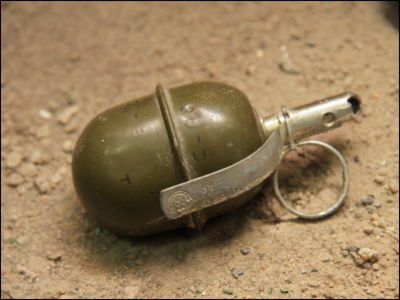A video of a 'shaped charge bullet' that ejects liquefied metal at ultra-high speed through a 30 cm thick steel

'
Shaped Charges-YouTube
The old man on the left is an explosives expert and the man on the right is a reporter.

A man who is an explosives expert has a case of shaped charge bullets in his hand ...

This is the metal lining (liner) used in shaped charge bullets. Copper is often used for the liner.

For shaped charge bullets, spread the explosive charge in the case ...

Place the liner with the apex of the cone facing the side with the explosive charge.

When the explosive detonates, the shock wave causes the liner to collapse into a dynamic ultra-high pressure state.

When pressure exceeds the limit, even solids such as metals will behave like liquids, and ultra-fast liquefied metal will be ejected along the central axis of the cone.

The liquid metal ejected in this way is called a 'metal jet' and travels straight like a single wire.

Due to the kinetic energy of the metal jet, the part in contact with the armor becomes an ultra-high pressure state, and this time the armor itself behaves as a liquid whose mechanical strength can be ignored, so the metal jet can penetrate as it is and penetrate even thick armor. ..

The thing was taken out by an expert man just as a trial ...

A plastic explosive used in England. Strictly different, it seems to be close to the

Packed with the torn bombs ...

I installed a liner.

This time, in order to test the power of the shaped charge bullet, a columnar steel with a length of about 30 cm held by a male reporter was prepared.
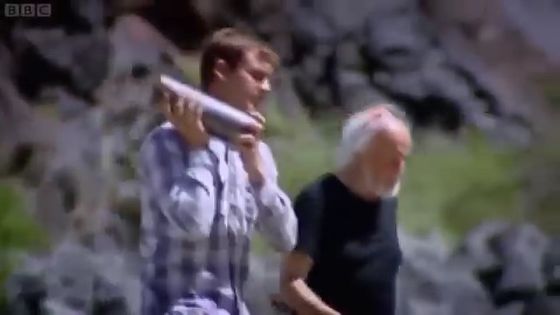
Place the steel in a cylindrical direction and see if the shaped charge bullet placed on it can penetrate the steel about 30 cm thick.
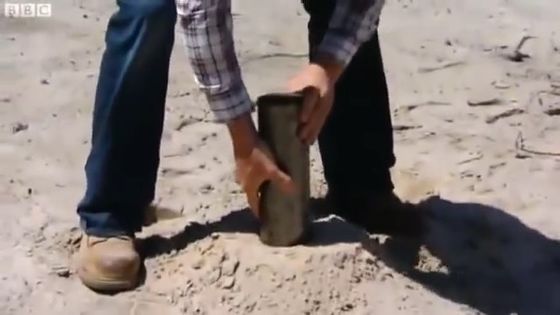
Set so that the inside of the conical inner faces the steel ...

Secure and detonate plastic explosives at remote locations.

explosion.
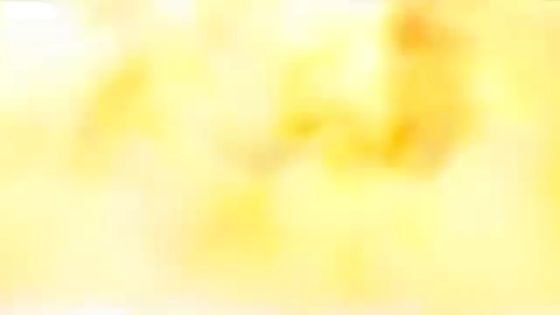

Two people heading to the place where the shaped charge bullet and steel were.
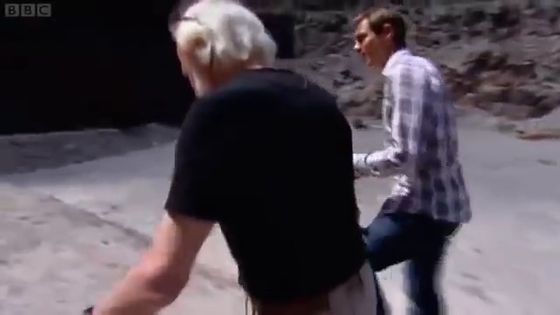
There is a hole in the steel I found ...
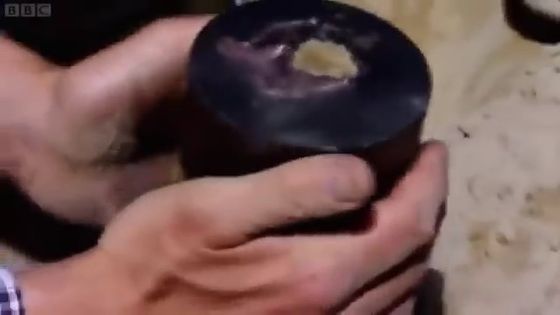
It penetrated firmly to the other side.
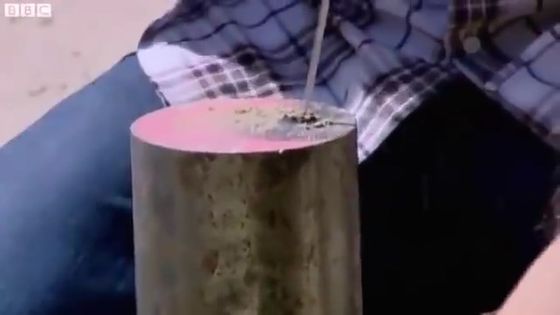
You can see what the shape of the metal jet actually ejected by the shaped charge bullet is by watching the embedded video below for 22 seconds or later.
This is a model of shaped charge bullets. The blue part is the explosive charge, and the red and green parts are the liner.

When the explosive detonates, a shock wave is transmitted to the liner ...
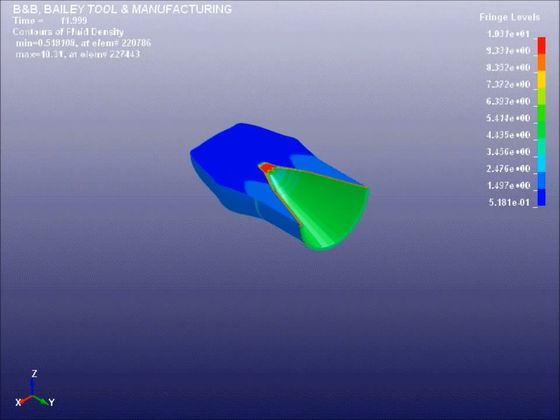
It collapses due to pressure and liquefies.
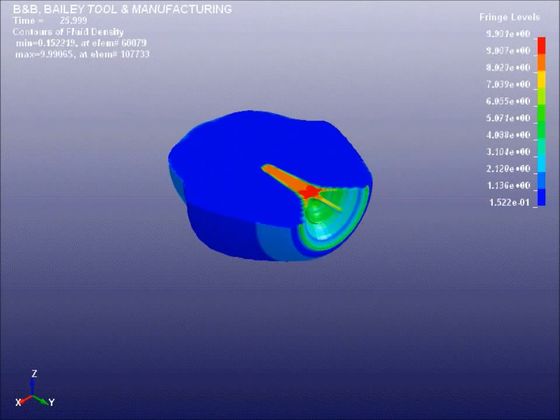
Then, a metal jet is generated so that it is squeezed from the bottom to the tip, and it penetrates the target like a spear.
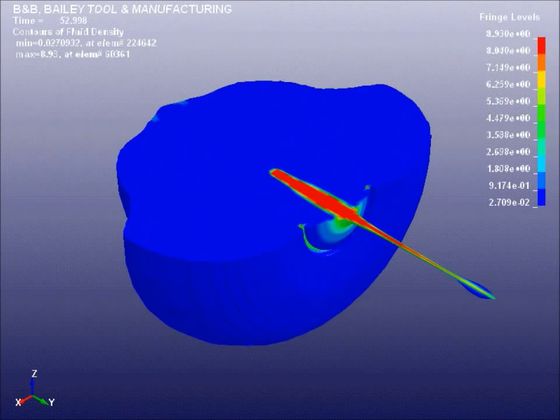
Looking at the simulation that made the orange part look like armor ...
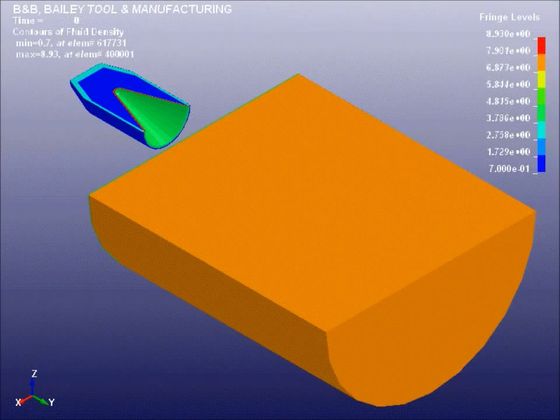
You can see that the armor that the metal jet touches behaves like a liquid and penetrates.
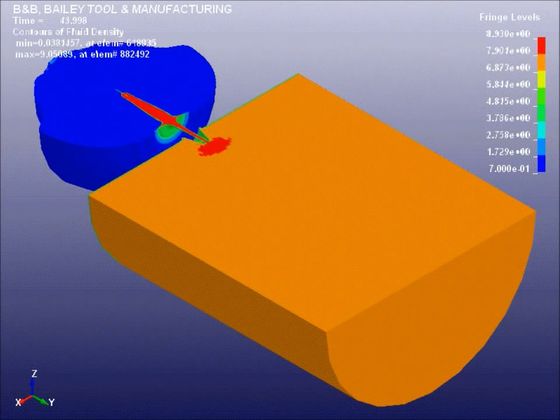

In addition, this video is also talked about on the social news site Hacker News, and one user said that a similar mechanism in the Iraq War is called self-forging bullet (EFP) , and a soldier's piercing through a concrete wall etc. Pointed out that he destroyed his legs and arms. This user, who was actually serving in the Iraq War, sits with his arms and legs as far apart as possible when traveling on a truck for a long time, and even if the EFP penetrates, neither arm nor leg can be damaged. He said he was doing it.
Shaped Charges – Sheet of copper going through 1ft of solid steel (2010) [video] | Hacker News
https://news.ycombinator.com/item?id=31382372
Related Posts:
